Nature’s Lawnmowers: How One EPA Facility Uses Goats for Eco-Friendly Landscaping
Published July 19, 2022; Updated July 23, 2024
At EPA's Narragansett, Rhode Island laboratory, the sounds of summer include goat bleating. Arriving on a colorful goat mobile (also seen as a painted school bus), 20 goats barrel through EPA grounds to graze on the landscape in lieu of lawnmowers and weedwhackers.
Since 2016, EPA’s Narragansett facility has hosted annual visitors from a local organization that brings in a team of rescue goats to clear the grounds of any unwanted or overgrown plants. These goat landscapers (known as goatscapers) are brought in to manage the lawns in place of using traditional landscaping practices. The goats clear invasive and overgrown plants, and in turn, they have lots of food to eat!
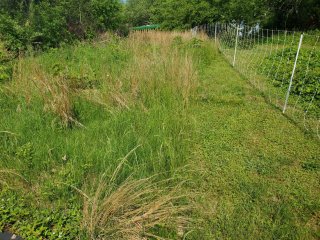
In addition to being great landscapers, the goats are also fan favorites at the lab. Each year, EPA staff and researchers look forward to being able to catch a glimpse of these adorable herbivores.
“The goats have historically provided a valued and environmentally responsible means of keeping the landscape in a ‘ship shape’ condition,” EPA-er Russell Ahlgren said. “Plus, our neighbors appreciate the quiet, calming bleats compared to loud lawn equipment!”
The 2024 goat crew was a team of 20 goats: Holly, Liberty, Jacob, Genora, Sunny, Agent Jay, Luna, Cinnamon, Ravon, Franky, Aang, Toff, Eska, Socka, Zuko, Bill, Richie, Kevin, Tina, and Lola.
Why Goats?
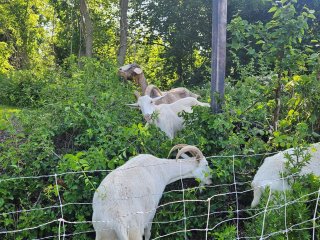
There are many benefits to hiring goats for management of landscaping when compared with traditional landscaping methods. Hiring goats to manage landscaping reduces the amount of fuel needed to power landscaping equipment and eliminates the need for pesticide use. Goats are also useful on hilly or rocky terrain that would be difficult to access with lawnmowers.
Goats will eat almost all plants, including plants that are invasive, such as mile-a-minute vine, or plants that would be irritating or harmful to humans, such as poison ivy or poison sumac. They also leave behind a source of fertilizer, improving the nutrients in the soil even after they’re gone. Once the goats have finished clearing the overgrown plants, the grounds are more suitable for native plants and can be maintained for much longer than traditional landscaping. In 2024, the goats will visit EPA’s Narragansett facilities twice, once in June and again in August.
Goatscaping is a great solution for improving biodiversity and restoring native plants. Benefits to improving the natural ecosystem can include prevention of erosion, increased oxygen production, carbon dioxide reduction, increased pollination, and more. Who knew that improving sustainability and biodiversity could be so cute?
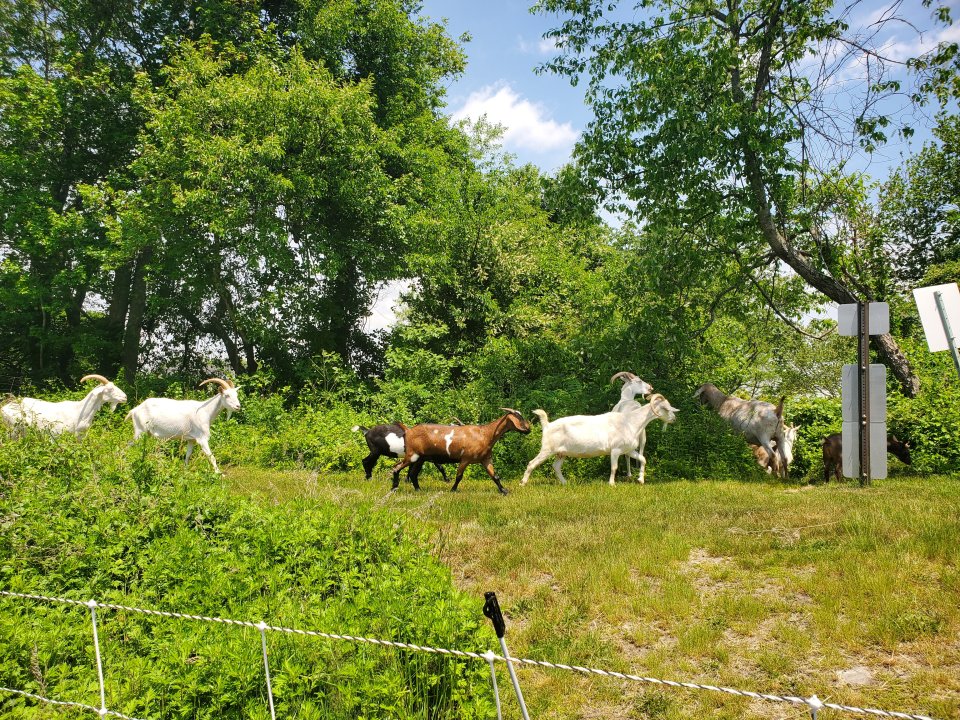
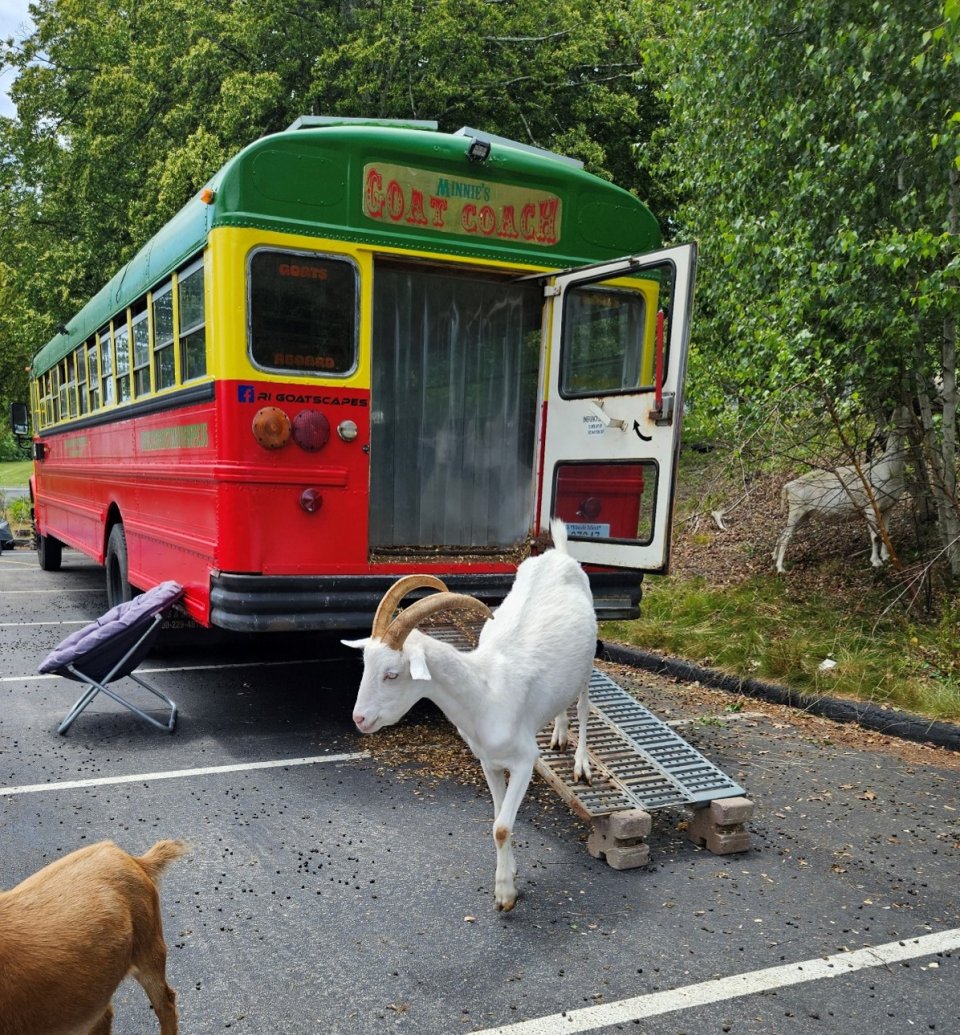
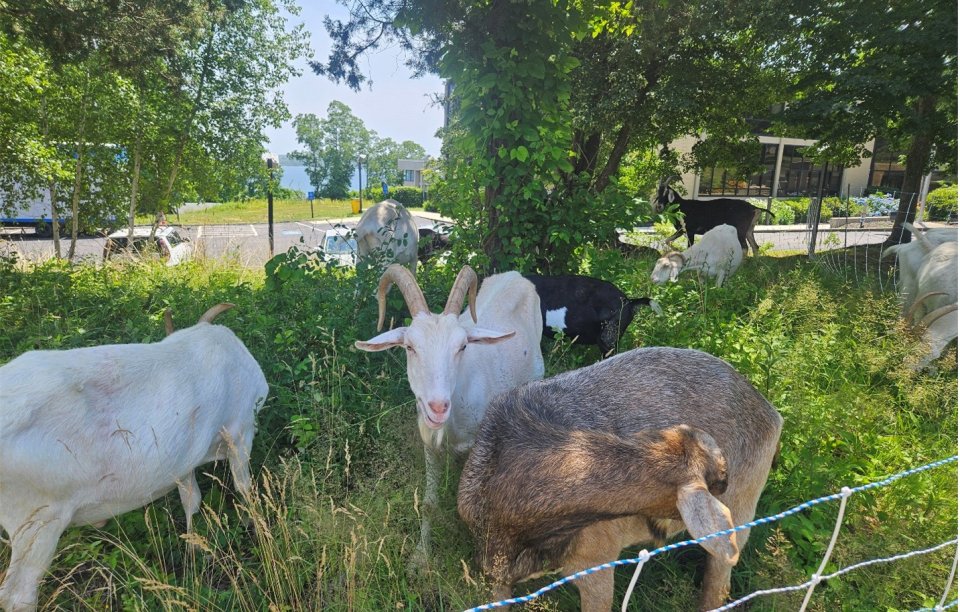
This article was written by Danielle Moore, an Oak Ridge Associated Universities contractor working in EPA’s Office of Research and Development.
